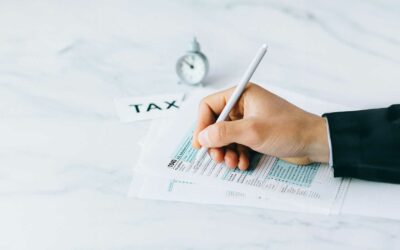Your essential guide to 2018 tax part 3: The tax you pay
 The new tax year starts on April 6th, so we have prepared a 3 part guide to cover what’s changing, and what is staying the same. We’ve looked at savings and pensions. Now in this third part, we look at the tax you will be paying in 2018/19.
The new tax year starts on April 6th, so we have prepared a 3 part guide to cover what’s changing, and what is staying the same. We’ve looked at savings and pensions. Now in this third part, we look at the tax you will be paying in 2018/19.
Personal Allowance
The Personal Allowance is the amount you can earn before you start paying income tax. Thanks to inflation, the government has increased personal allowances, which should mean you will pay less tax.
It will rise from the current £11,500 to £11,850 in 2018/19
The income tax threshold for higher rate tax will rise from £45,000 to £46,350 in the new tax year.
Marriage Allowance
The Marriage Allowance allows a civil partner or spouse to transfer 10% of their Personal Allowance to their partner. This means the partner can earn more before they start to pay tax.
As the Personal Allowance rises to £11,850 for 2018/19, £1,185 can be transferred to the lower-earning partner, meaning they have £237 less tax to pay.
National Insurance Contributions
If you are self-employed you could face two types of National Insurance Contributions (NICs). Class 2 NICs of £2.95 per week will payable for those whose profits are £6,205 or more a year, while Class 4 payments are paid by those whose profits are £8,424 or more a year with 9% on profits up to £46,350 followed by an extra 2% on profits above it.
Class 2 NIC payments were set to be abolished, but will now remain until the end of 2018/19.
Inheritance Tax
The current inheritance tax-free allowance for individuals is £325,000, while for spouses and civil partners, it’s £650,000. Rising house prices mean that many more families are being pulled into the inheritance tax net.
The government introduced the resident nil-rate band allowance to help family homes to be passed to direct descendants free of inheritance tax.
For 2017/18, this means an additional allowance of £100,000 per person.
For 2018/19 this rises to £125,000 meaning that an estate with a family home worth up to £450,000, or £900,000 for couples can be passed on with no inheritance tax.
Capital Gains Tax
Capital Gains Tax (CGT) is charged on the profits made when assets are sold or transferred at either 10% for basic rate taxpayers or 20% for higher and additional rate taxpayers. If gains take you from the basic rate into the higher rate, you’ll pay 10% on the amount in the basic rate band and at 20% on the amount which falls in the higher rate band.
For a buy-to-let or investment property, the tax is higher:
- Higher and additional rate taxpayer – 28%
- Basic rate taxpayer – 18%
Remember, basic and higher rate thresholds increase slightly for 2018/19.
However, there is an annual CGT allowance, below which no tax is paid. For 2017/18 this is £11,300, this increases to £11,700 for 2018/19.
Dividend Allowance
Directors of small businesses often pay themselves through dividends rather than salary.
- Basic rate taxpayer – 7.5%
- Higher rate taxpayer – 32.5%
- Additional rate taxpayers and trustees – 38.1%.
There is a tax-free Dividend Allowance. In 2017/18 it was £5,000. It will be reduced to £2,000 in the 2018/19 tax year.
What should you do about tax in 2018/19?
To make sure you are making the most of your tax allowances in the new tax year, professional help is essential. At Continuum we are ready to help.
Levels and basis of reliefs from taxation are subject to change and depend upon your personal circumstances.
The Financial Conduct Authority does not regulate tax or trust advice.
Get in touch
If you would like to discuss further please call us on 0345 643 0770, email us at [email protected] or click on the ‘Contact Us’ link below. Thank you.



